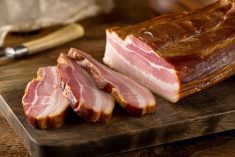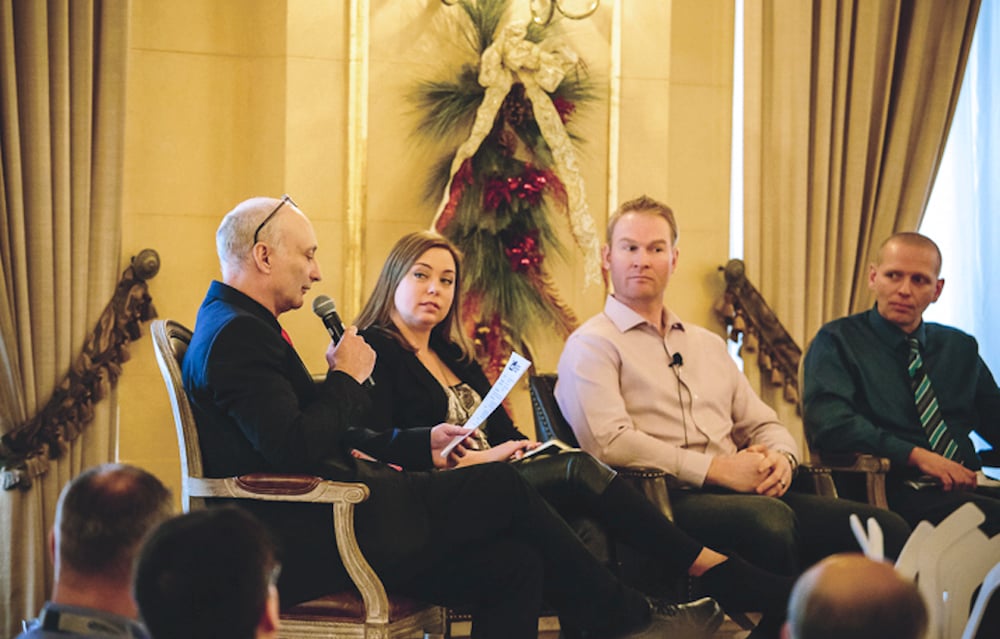This time the conversation was the opposite of what I’m used to. In the last few years it’s become common enough to hear North American machinery executives talk about how they’re going to get their share of the huge new markets in the emerging economies. But in May, I was at implement manufacturer Lemken’s factory in Alpen, Germany, and the growth market on the table there was Canada.
In just nine years, our country has grown to become Lemken’s fourth-largest export market.
Read Also

The big squeeze: How to be fair to siblings during farm succession
Managing sibling business relationships on family farms.
Short-term thinking goes against the grain at this family-owned firm that has existed since 1780. Just as John Deere started out building plows in his own Midwest blacksmith shop, Wilhelmus Lemken did exactly the same thing on the other side of the Atlantic. Both men founded brands that now have long-term, global strategies. Both brands also see superior overall value as their core advantage, and both are strongly associated with a trademark colour in their home countries, green for Deere, blue for Lemken.
The comparison is actually kind of striking. “I’m focused on growth, but only on profitable growth,” says Anthony van der Ley, Lemken’s CEO. “(Some companies) are more focused on absolute growth, but not on the margin. We can get any order if we drop the price. If I’m interested in the short term, I can double the sales in three years. But don’t ask me if the company is going to exist in 10 years.”
Despite being unwilling to sacrifice profits for rapid growth, van der Ley says Lemken has actually achieved such growth in Canada. In 2013 the company’s sales hit 15.4 million euros (about C$22.9 million), up from nine million in early 2012. And he is bullish about 2014.
“In Canada this year we are aiming at 18 million euros, which I think is too low,” van der Ley says. “I would like to see 25, but we have to be realistic. If you add our U.S. volume to that, this year would be 28 million (in North America). There is a huge market, huge potential.”
For Christian Jungmann, Lemken’s export sales manager, the key to the Canadian market has been to provide “the right (tillage) tool at the right time.” Lemken’s bread-and-butter products are cutting-edge tillage implements.
- From the Grainews website: Lemken introduces the Rubin 12 compact disc harrow
“Ten or 15 years ago when someone here in Germany talked about Canada, everyone was just thinking about big fields, big structures, big distances, this kind of thing,” Jungmann says. “No one was aware the eastern part was completely different.”
After setting up a Canadian subsidiary in Quebec, where many farms have a lot in common with those in Europe, an unexpected thing happened. A former company employee who emigrated to Manitoba called Jungmann suggesting there was a potential market for the brand’s tillage tools on the Prairies. After setting up a field demonstration there and immediately getting five firm orders for implements, executives found themselves looking for their first Prairie dealer.

“That was a step we had not planned in the beginning, to be honest,” says Jungmann. “We thought we’ll go into the East. Then I thought we’ll go over to B.C. At that stage, 2005, 2006, I had not thought about the Prairies, because it was known for no till. So everyone told me no tillage tools can be sold there. There’s no business. You can stay at home. Everyone believed that.”
Sales across the Prairies continue to exceed expectations, and now Lemken has 17 dealers with multiple locations across the region. “The good news was there was no need for us to visit dealers,” Jungmann says. “The dealers came to us.”
Building on the method it used to get those first five Prairie sales, Lemken management believes that once farmers see what blue machines can do, they’ll be hooked. So demonstrations — even impromptu ones — have been a large part of the brand’s marketing efforts.
“To promote the products, we have a lot of demonstration tours going on in the different provinces,” says Laurent Letzter, Canadian sales manager. “We rented a tractor in Ontario. For a couple of days I was driving (between scheduled demos) and we’d see some dust in the field, see a farmer working. We’d stop and ask if they’d like us to help them do some work. They can stay in their cab and see our demonstration guy doing a couple of passes. We’d leave them a brochure and they keep on working.
“One dealer in Alberta hired four demonstration people. He said 80 per cent of the demos he’d done turned into sales,” Letzter says.
The company also emphasizes followup support and service in its Canadian operation, just as it does at home in Germany.
“If you do something, you have to deliver the best service,” explains van der Ley. “Price is important, but it’s not the most important thing. If we had to sell on (purchase) price we would lose.”
“Product development is very important to Lemken, because we always try to innovate,” adds Letzter. “The foundation of the company is to bring new innovation to market, not just to increase turnover. There are over 100 engineers working here (in Alpen) to develop new products. When you count 1,000 employees that’s 10 per cent who are working on creating new innovation.”
But that innovation is only valuable if it meets farmers’ needs. What works well in Germany or France isn’t necessarily useful in Alberta or Ontario.
“The farming systems in North America are different,” acknowledges van der Ley. “First we want to make sure we understand the market and get feedback.”
Because of Lemken’s relatively flat management structure, Letzter can channel Canadian farmer feedback (much of it gleaned from those field demonstrations) directly to engineers at the Alpen factory, which has resulted in several design changes on units bound for Canada.
“Most units in Europe have three-point hitches, but in the West that wasn’t even an option,” Letzter notes. “We had to do a full line of drawbar units. And now that we have it, we see opportunity in other markets.”
Shortly before taking the stage to give his official address to farm journalists at Lemken’s International Press Day event in Kassel, Germany (also in May), van der Ley talked about the growth he expects in North America. And the numbers he throws out are ambitious. He backs them up by estimating future global farm income. Like every equipment company executive, he knows that farm income is the real driver behind machinery sales.
“In the next 10 years, we feel the world will have a tremendous agricultural commodity scarcity,” van der Ley says. That translates into strong farm incomes.
“If you look at the global implement market, last year, in 2013, it was a 96 billion (euros) market worldwide. In the next 10 years it will nearly double. Why? Because in the developing world, farmers are purchasing tillage equipment. That is a fantastic opportunity for Lemken. The market in China will triple. India will double.”
“We think the biggest growth potential is in Asia,” van der Ley goes on. “But on the other hand, if you look to absolute sales volumes, because bigger machines have a higher sales value, then there is tremendous potential in North America. In China and India there is big potential, but machines are very small, so you have to sell a lot of machines for a decent value.”
So van der Ley believes Lemken will need to stay flexible to cash in on those opportunities.
“You cannot grow only by increasing your sales,” van der Ley says. “You have to adapt your organization.”
















